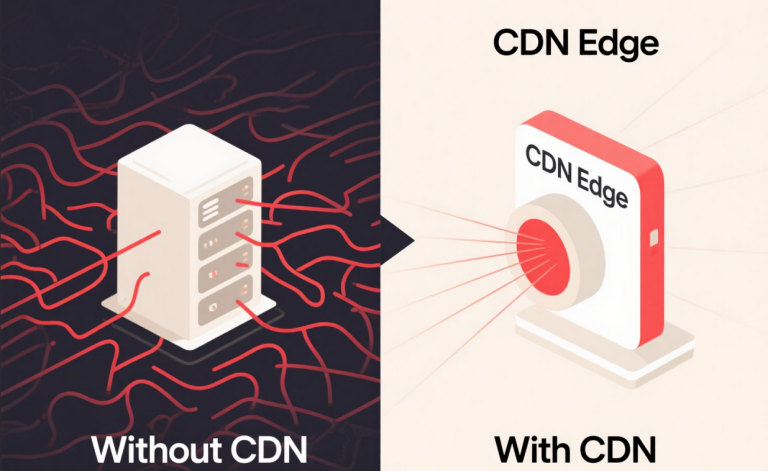
Your website is down. Users are flooding your support channels with complaints of connection timeouts. Yet, every single one of your monitoring dashboards is a sea of tranquil green. CPU utilization is near zero. Memory usage is flat. Your network traffic graph shows a pathetic, barely-there trickle of data, not the massive, angry spike of a traditional DDoS assault.
Your server isn’t overwhelmed; it’s just… silent. It’s not responding. It’s like a world-class athlete who has suddenly, inexplicably, forgotten how to breathe.
This isn’t the work of a barbarian horde laying siege to your castle with brute force. This is the work of a far more sophisticated and insidious adversary. This is the work of a silent assassin.
This assassin has a name: Slowloris.
It’s one of the most elegant, efficient, and deviously simple application-layer attacks ever devised. It doesn’t rely on massive bandwidth or a sprawling botnet. It relies on patience and a deep understanding of how your web server thinks. It’s a gentle killer, a whisper in the dark that can bring even the most powerful servers to their knees.
Today, we are going to perform a forensic autopsy on this silent killer. We will dissect its methods, understand the precise vulnerability it exploits, and then, we will build an ironclad defense strategy to ensure this assassin can never touch your servers again.
Chapter 1: The Anatomy of the Attack - A Weaponized Conversation
To understand Slowloris, you must first forget everything you think you know about DDoS attacks. This is not a battle of resources. It is a battle of conversations, and the attacker’s weapon is politeness.
The Analogy: The Restaurant of a Hundred Phone Lines
Imagine your web server is an incredibly popular, high-end restaurant. This restaurant has a state-of-the-art telephone system with 100 lines dedicated to taking reservations.
A Legitimate Customer: Calls one of the lines, speaks to a host, makes a reservation, and hangs up. The entire interaction takes 30 seconds. The line is now free for the next caller.
A Brute-Force DDoS Attack: A robocaller network simultaneously dials your restaurant with 10,000 calls. All 100 lines are instantly busy. The attack is loud, obvious, and consumes massive resources.
Now, meet the Slowloris attacker. He is not a robocaller. He is a single, clever prankster with a multi-line phone and a devious plan.
The Attack Unfolds:
The First Call: The attacker dials the restaurant on his first line. A host (an Apache web server process/thread) answers politely: "Good evening, The Internet Restaurant, how may I help you?"
The Slow Conversation: The attacker begins to speak, but he does so excruciatingly slowly. "Hello… I… would… like… to… make… a… reservation…" He says one word, then waits 15 seconds before saying the next.
The Hostage Situation: The restaurant host, trained to be polite and patient, doesn't hang up. They assume the caller has a bad connection or is perhaps elderly. The host holds the line, patiently waiting for the caller to finish their sentence. This single phone line is now occupied. It is held hostage by a conversation that will never end.
The Escalation: While the first host is being held hostage, the attacker uses his second phone line to call the restaurant again. A second host answers and is immediately drawn into another painfully slow conversation. The attacker repeats this process, one line at a time.
Complete Paralysis: Within a few minutes, the attacker has successfully initiated 100 of these slow-motion conversations. All 100 of the restaurant’s phone lines are now tied up. Each of the 100 hosts is patiently holding for a reservation that will never be completed.
The result? The restaurant’s reservation system is completely paralyzed. Any real, high-paying customer who tries to call now gets a perpetual busy signal. The restaurant is, for all intents and purposes, out of business.
And the most chilling part? The attacker achieved this total paralysis using almost zero bandwidth. He just sends a tiny keep-alive signal—a single whispered word every 15 seconds—on each line to prevent the connection from timing out. The restaurant’s phone bill will show no spike in usage, yet it is completely crippled.
The Technical Mechanism: The Unfinished Letter
This analogy maps perfectly to the technical reality. A standard HTTP request is like a letter with a header and a body, and it must end with a specific sequence: a double carriage return/new line (\r\n\r\n). This sequence tells the server, "The letter is finished, you can process it now."
A Slowloris script exploits this rule. It:
Opens a connection to the web server.
Sends an initial, partial set of legitimate headers, like
GET / HTTP/1.1andHost: yoursite.com.Crucially, it never sends the final
\r\n\r\nsequence.To prevent the server from giving up and closing the connection due to inactivity, the script periodically sends additional, trivial header lines (
X-a: b\r\n) every few seconds.
To the web server, this looks like a legitimate client on an extremely slow and unreliable network, painstakingly trying to send a request. Bound by the rules of the HTTP protocol, the server process must wait, keeping that precious connection slot occupied.
This attack specifically targets the concurrency model of web servers like Apache, which typically use a "one thread per connection" model. When all the available threads in its connection pool are occupied by these slow-motion requests, the server can no longer accept any new, legitimate connections.
Chapter 2: Why Your Armor is Useless - The Failure of Traditional Defenses
When faced with this kind of subtle, logical attack, many of our go-to security tools are rendered completely ineffective.
Fallacy #1: More Bandwidth is the Answer. A common reaction to a DDoS attack is to increase network capacity. Against Slowloris, this is like the restaurant leasing 100 more phone lines. It’s an expensive and utterly useless solution, as the low-resource attacker will simply scale up their own attack to occupy the new lines as well. The attack’s traffic footprint is minuscule.
Fallacy #2: Firewalls and WAFs Will Catch It. A standard firewall or a signature-based WAF is effectively blind to a Slowloris attack. Each connection is opened correctly. Each data packet sent is perfectly legitimate and contains no malicious payload. There are no known “bad” signatures to match. The requests don’t look malicious; they just look slow. A guard trained only to look for wanted posters will see nothing wrong with a very slow-talking, but otherwise polite, visitor.
Chapter 3: Hardening the Castle - Server-Level Mitigation
Before we get to the ultimate solution, there are important hardening steps you can and should take directly on your web server. These are about teaching your "hosts" to be more impatient and less tolerant of time-wasters.
For Apache Users: mod_reqtimeout is Your Friend
The most direct defense on an Apache server is to use the mod_reqtimeout module. This gives you granular control over connection timeouts. A good configuration might look like this in your httpd.conf:
<IfModule reqtimeout_module>RequestReadTimeout header=20-40,minrate=500</IfModule>
This directive tells the server: "For the headers of a request, I’ll give the client an initial 20 seconds to send something. After that, I’ll give them up to 40 seconds total, but only if they are sending data at a rate of at least 500 bytes per second. If they can’t keep up, hang up the phone." This is an effective way to prune slow, malicious connections.
For Nginx Users: The Inherent Advantage
Nginx, with its event-driven architecture, is naturally far more resilient to Slowloris than Apache. A single Nginx worker can handle thousands of connections, so it’s much harder for an attacker to exhaust its connection capacity. However, it’s not completely immune, and proper timeout configuration is still crucial. Directives like client_header_timeout and client_body_timeout instruct Nginx to close connections if the client stops sending header or body data for a specified period.
The Limitation of Server-Side Tuning
The main drawback of these server-side timeouts is that they are a blunt instrument. While they will effectively kill Slowloris connections, a very aggressive timeout setting could also accidentally disconnect a real user who is on an extremely slow, high-latency, and unreliable mobile network in a remote area. You risk throwing the baby out with the bathwater.
Chapter 4: The Ultimate Countermeasure - The Edge as Your Intelligent Answering Service
The truly definitive solution to the Slowloris problem is not to make your server tougher, but to change the architecture entirely. You must fight this clever, distributed attack with an even more clever, distributed defense. You must move the battle away from your castle gate and onto the global frontier.
The Analogy: Hiring a Professional Call Center
Instead of having your restaurant’s 100 precious phone lines exposed to the public, you hire a massive, global, AI-powered call center (your CDN, like Cloudflew) to handle every single incoming call.
How the CDN Edge Makes Slowloris Obsolete:
Massive Concurrency: The attacker initiates their 100 (or 100,000) slow connections. These connections don't terminate at your origin server. They terminate at the CDN’s edge nodes, which are just milliseconds away from the attacker. These edge servers are designed from the ground up to handle millions of simultaneous connections. The attacker is now wasting the CDN’s near-infinite resources, not yours.
The Golden Rule of Reverse Proxies: This is the magic bullet. The CDN edge server acts as a reverse proxy. It has one critical rule of engagement: "I will not even bother to contact the origin server (the main restaurant) until I have received a complete, fully-formed HTTP request from the client."
The edge server will patiently wait for the attacker’s slow, partial headers. But because the Slowloris script never sends the final \r\n\r\n to complete the request, the edge server’s condition is never met. Eventually, the edge server’s own internal timeout will be triggered, and it will simply drop the attacker’s connection.
The result is beautiful in its simplicity. The malicious, incomplete traffic never gets off the CDN’s doorstep. It never even gets a chance to know your origin server’s phone number. Your server’s entire connection pool remains untouched, pristine, and fully available to serve legitimate, complete requests from real users that the CDN forwards on.
The Added Layer of Intelligence:
Furthermore, a modern security CDN can use behavioral analysis. When its WAF sees a single IP address opening hundreds of connections without ever sending a complete request, it recognizes this pattern not just as slow, but as malicious. It can then proactively block the attacker’s IP address entirely, shutting down the attack at an even earlier stage.
The slow, gentle killer has met a defense that is not only infinitely more powerful but also infinitely smarter. The fight was over before it even began.
This isn't just about defending against a single, esoteric attack vector. It’s about a fundamental shift in security architecture. The gentle assassins of the web, like Slowloris, thrive on exploiting the logical weaknesses of centralized, exposed servers. By moving your defensive perimeter to a distributed, intelligent edge, you are not just buying a shield. You are adopting a new paradigm—one that is inherently more resilient to both the brute-force assaults of the past and the silent, deadly whispers of the future.

